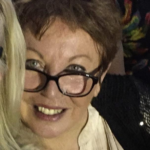It began with a whisper. A voice, quiet but clear, weaving its way through the fabric of Australian society, carrying with it a simple, but radical, idea: that power should belong to the people, not just those who sat in Parliament House. At the heart of this movement was an historian, and a woman of extraordinary vision.
She was not the kind of person who stood out in a crowd. Slight of frame, unassuming in presence, she could walk through the streets of Sydney, Melbourne, or Perth unnoticed. Yet when she spoke, people listened. There was something in her voice — a calm conviction, a quiet strength — that made her words impossible to ignore. Her speeches were not grandiose; she spoke with clarity and her words made sense. She did not bellow from podiums or demand attention. Instead, she spoke as an historian does, drawing from the past to illuminate the present, threading together the lessons of history with the urgent need for change.
Her journey began in academia. She spent years studying the evolution of democracies, the cycles of power, and the way nations had risen and fallen by the will of their people. She saw Australia as a country at a crossroads – a democracy in name, yet a system where real decisions were made behind closed doors by politicians who were often more beholden to party lines than to the will of the people. The citizens had a vote every three years, but their voices rarely shaped policy in any meaningful way. She envisioned something different: a parliamentary system where decision-making was shared between elected officials and the people they served.
At first, her ideas circulated in small circles. But then, a speech she gave at a local historical society was recorded and shared online. In it, she dissected the history of governance, laying out how democracies had flourished when the people had a direct say in the laws that governed them. She proposed a model of participatory democracy, where citizen assemblies, digital referendums, and direct policy input from the public would guide Parliament’s decisions. The video went viral.
People began to listen. The frustration that had simmered beneath the surface of Australian politics for years — disillusionment with career politicians, corporate influence, and stagnant policies — found a voice in her. She was not a politician, not a firebrand revolutionary calling for upheaval, but a thoughtful thinker who laid out a plan rooted in history and reason. And that, perhaps, made her the most dangerous kind of revolutionary.
Small groups formed – discussions in libraries, book clubs, town halls. Her ideas spread, not through aggressive campaigns but through the steady drip of reason and logic. Then came the interviews, the forums, the debates. People from all walks of life, from farmers in the outback, tradesmen on the building sites, to urban professionals began engaging with the vision she had painted. Public pressure mounted and slowly politicians took notice.
The movement reached its tipping point when a group of independent MPs invited her to present her model in Parliament. She stood before the elected officials of Australia, her voice calm, but unwavering, and laid out the path toward a more engaged democracy. The media had no choice but to cover it, and soon, the public outcry for change became too loud to ignore.
In an historic referendum, Australians voted to restructure their parliamentary system. All politicians were to be independently elected, accountable solely to their constituents rather than to party politics or financial backers. Corporate lobbying and political donations were banned, ensuring policy was shaped by public interest, not private wealth. Citizen assemblies were integrated into legislative processes, binding public referendums on key policies became standard, and transparency laws guaranteed that government decisions could no longer be made behind closed doors. It was not a revolution of fire and fury, but of words and wisdom.
Surrounded by independent representatives and advisers of the highest calibre, wise and experienced experts in every field, her first act as the People’s First Minister was to establish a ground-breaking education reform. The legislation ensured that every Australian child, regardless of background, received an education that met the highest global standards. Free university education became a national right, opening doors to opportunity for all. This was swiftly followed by aggressive climate change policies and a decisive move toward national independence, ensuring that Australia’s future was dictated solely by the will of its people. With the right leadership Australia quickly became a country that put nationalism aside and opened its heart and mind to all members of the human race as equals.
And at the centre of it all was the historian whose whispers turned into a roar, who taught a nation to reclaim its voice and, in doing so, reshaped its future, while the world took note.

Barb Dadd
Barb Dadd is a 74 year old mother and grandmother living in regional Western Australia, driven by a lifelong pursuit of truth and justice.
